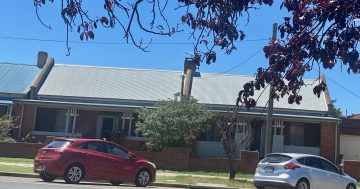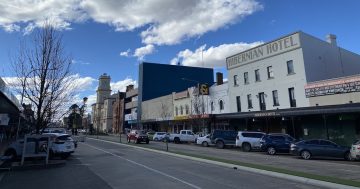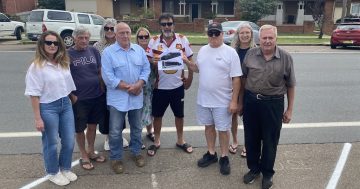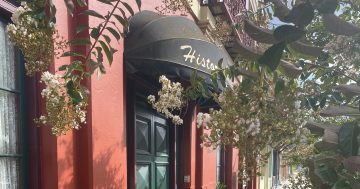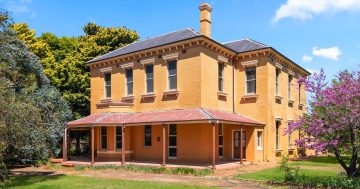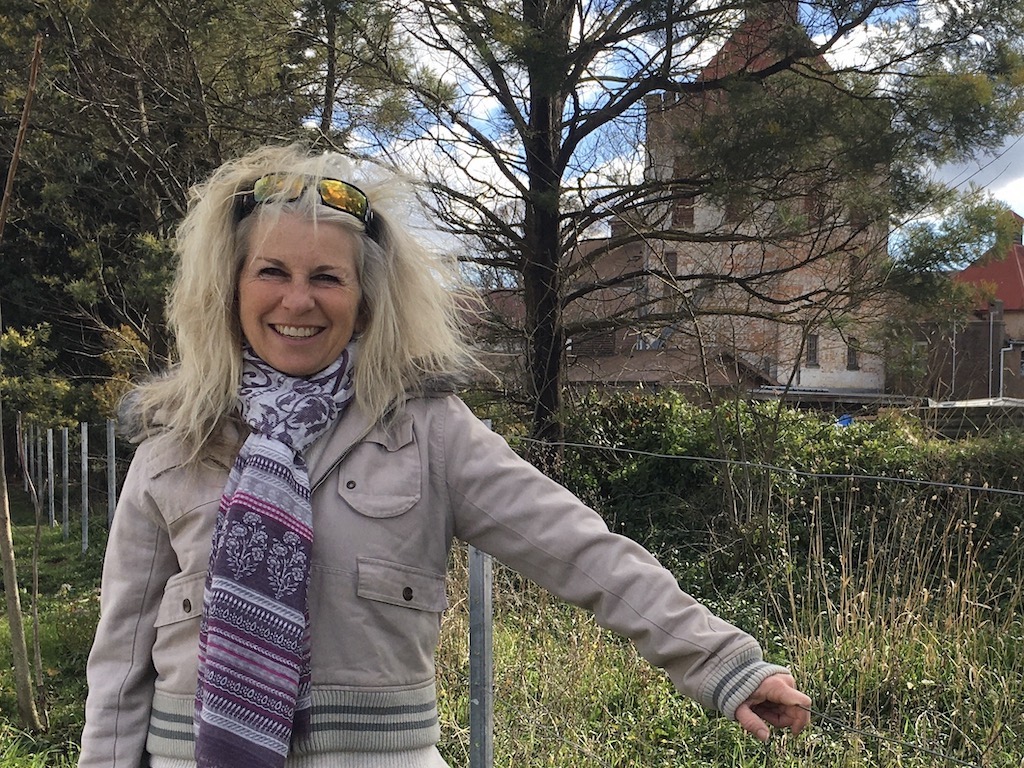
Eastgrove resident Marion Chaaya near the Goulburn Brewery, which originally was established by William Bradley, whose family founded Lansdowne Park. Goulburn Heritage Group is advocating for a tourist link between the brewery and Lansdowne Park. Photo: John Thistleton.
Goulburn Heritage Group and residents say a proposed new subdivision near historic Lansdowne Park will ruin the heritage significance of the city’s oldest homestead and farm.
Lansdowne homestead and surrounding precinct have been associated with the development of Goulburn since the earliest days of exploration, according to a statement of significance in the NSW Heritage Register.
“It provides physical evidence of its establishment and occupation by one of the most powerful men (William Bradley) in the colony who played an important role in shaping the development of NSW.”
A development application for a 79-lot subdivision at Lansdowne Park downplays its heritage according to the Goulburn Heritage Group in a submission responding to the application. The GHG believes heritage considerations should be at the forefront of assessing the proposal to build new homes and streets.
The GHG’s main concern is the long-term sustainability of the original buildings and what measures will be put in place by Goulburn Mulwaree Council to protect them.
The GHG says the council should be required to take note of the management recommendations for the site from the State Heritage Register Listing, to protect the land around Lansdowne to preserve its rural character and to ensure its economic viability.
Consultants acting for the developer who is Lansdowne Park owner Rashid Bhuiyan, say opening the land for development strikes the balance of land use for much sought-after residential land, being a natural extension to adjacent residential land, and the retention of the rural landscape associated with this historical precinct within the Goulburn environs.
On the NSW State Heritage List, Lansdowne Park’s origins are well documented. Sergeant Jonas Bradley who arrived in the colony in 1791 and his sons Thomas and William, established Lansdowne after receiving land grants. William Bradley expanded the property and in the 1830s established a flour mill on Lansdowne and during the next decade a brewery also started operating.
While much of the land has since been subdivided, the homestead and buildings remain intact in a farm setting. The rural setting is an important part of its heritage statement, a point reinforced previously in a submission to the NSW Government:
“… it is not only the buildings which give Lansdowne its special character, but the spaces between courtyards and farmyards, the glimpses between buildings to other farm buildings and more distant views across the paddocks to the ridge behind Eastgrove and across Mulwaree Ponds to the mill and the City of Goulburn.”
GHG says the developer’s ‘excellent’ Conservation Management Plan needs to be adopted by the Council and the recommendations need to be part of the approval process.
GHG said it was relying on the council to balance the long neglected wonderful heritage of Goulburn with the need for more housing. “We suggest larger housing subdivisions are better located away from items of NSW state significance like Lansdowne Park, identified as an essential heritage item to Goulburn,” the submission says.

Beautiful stone farm buildings at Lansdowne Park, Goulburn. Photo: Ray White Real Estate, Goulburn.
Eastgrove resident Marion Chaaya organised a letterbox drop urging her neighbours to save Eastgrove from overdevelopment. Her leaflet sparked many comments on social media including: “God forbid … Goulburn is turning into Gungahlin!”
Some comments favoured the development, including: “What about people looking for somewhere to live, you can’t have trees everywhere and nothing for the community?”
Ms Chaaya said: “Lansdowne needs money, it needs to be looked after but this is just tragic. To turn it into a subdivision exceeds what was previously recommended,” she said.
“Most people who live in Eastgrove love the quiet atmosphere, that’s why we live here,” she said. “I walk up over Rocky Hill all the time, it is beautiful, in winter it is just magical looking at the mist.”
Goulburn First Nations people are strongly opposed to the development because parts of the 14 hectares surrounding the homestead are the gravesites of their ancestors.
Ms Cooney agreed with that opposition, and said previous developments had been approved with no regard to the Aboriginal sites they were covering.
Elsewhere in Eastgrove, the scarred bushland from an uncompleted residential development above May Street left a shocking scar across the hill, Ms Chaaya said.









